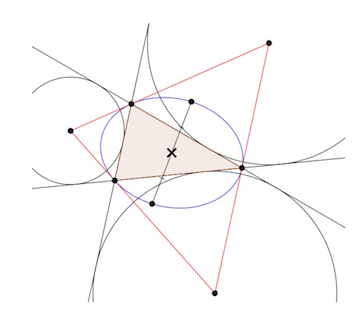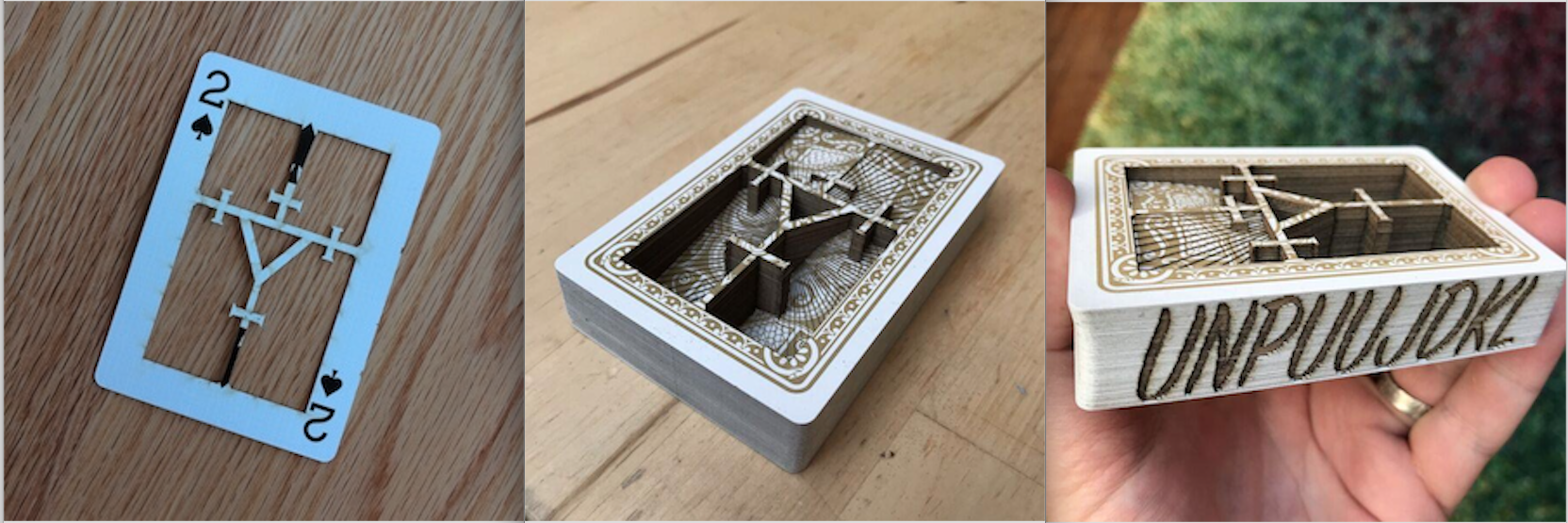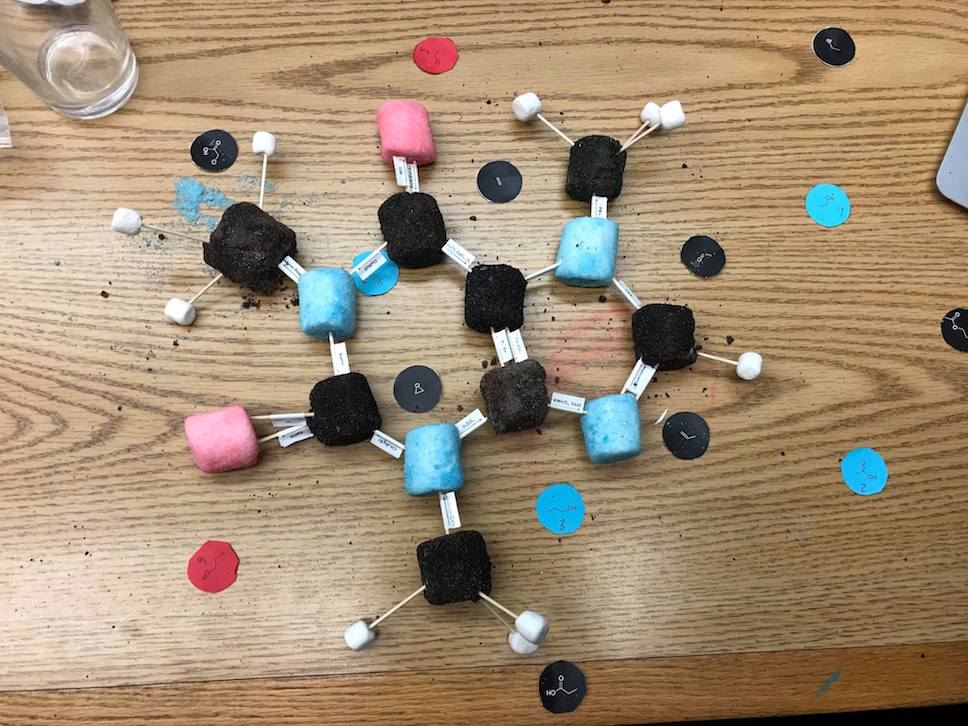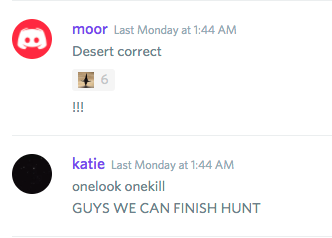MIT Mystery Hunt 2018: The Puzzles
Jan 17, 2018This year’s mystery hunt ended last Monday, and after a heroic effort, my team managed to be the twelfth and final team to finish. This hunt did have fewer puzzles than usual, but I don’t think anybody noticed. Puzzle quality was generally high across the board, and since the puzzles themselves were often longer than average (I think), it was all a wash. Below I’ve highlighted some puzzles of note (spoilers abound!):
Dataset Puzzles
If you’ve done enough puzzlehunts, you start to see ideas for new puzzles wherever you go. Indeed, there’s a fairly large class of puzzles which simply involves taking some dataset of things, removing some information, and structuring it to yield an answer. In an inexperienced constructor’s hands, these can feel like no more than an exercise in Google search, but when done right, these puzzles can be excellent. The key—I think—is to let the structure of the data influence the structure of the puzzle itself. The puzzles below all do this to a varying degree.
Family Dinner: This is a logic puzzle about a family with five sisters each of whom has several daughters of varying ages. The twist is that each of the mothers corresponds to one of the five French mother sauces, and each of the daughters corresponds to a “daughter sauce”, a common variant of the mother sauce.
X Marks the Spot: Several years ago, I stumbled across the encyclopedia of triangle centers while reading WolframMath articles and thought that it would make a great dataset for a puzzle. Well, someone did make a puzzle out of it, and it’s fantastic! Solvers are given various constructions for different triangle centers, and must identify the center’s numeric encyclopedia entry by reasoning geometrically. I know my orthocenter from my centroid as well as anybody on our team, so I helped identify several of the diagrams. I’m most proud of discovering the Mittenpunkt (below).

This puzzle could have ended here, and it would still have been adequately interesting for my taste, but instead, the final step involves taking the isogonal conjugates of each of the triangle centers and re-doing the extraction, a perfect example of the dataset influencing puzzle structure.
Feedback Encounters of the CLD Kind: This puzzle perhaps wasn’t as unambiguous or elegant as some of the other puzzles in this section, but I enjoyed it all the same. (To be fair, you have to have a very high IQ to understand it). We were given a bunch of unfilled causal loop diagrams, and plot points from Rick and Morty episodes. We needed to fill in the diagrams, and then index into the episode titles by the number of positive feedback connections. Until I solved the puzzle, I didn’t realize to what extent Rick and Morty episodes were just about self-reinforcing cycles.
Potlines: This puzzle does have a dataset that it uses in a non-trivial manner, but I mostly wanted to talk about it because I love how the title is a reference to the 2012 puzzle also called Potlines (about cooking), which is in turn a reference to the famous 2011 puzzle Plotlines (about movie/tv/novel plots). This puzzle is about pot, a.k.a. marijuana. Each image identifies a marijuana strain, and you can determine the common ancestor of pairs of strains and then index into the ancestor’s name to solve.
Beautiful Puzzles
I thought these puzzles were all beautiful, some more literally than others.
Marked Deck: This was one of the first physical puzzles we acquired over the course of the hunt. The puzzle was a deck of cards with some portion of each of the cards laser-cut away. We could rearrange the cards to form a symbol rising out of the face of the deck with some gibberish text cut into the side. The symbol was on the cover of the novel Cryptonomicon by Neal Stephenson.

I’ve read the book (it’s fantastic, if a little lengthy), and didn’t recognize the symbol, but I did immediately guess that the puzzle was asking us to decrypt the text using the Solitaire cipher, a real, cryptographic algorithm developed by Bruce Schneier for its fictional use in Cryptonomicon. Sure enough, when we decrypted the text using the new order of the cards we produced the phrase “IN SHUFFLE”. An in-shuffle is essentially a riffle shuffle executed perfectly (alternating cards between each half of the deck).
After this, we got stuck. We tried in-shuffling the deck several times and re-decrypting the text, but nothing seemed to be working. Unfortunately, we never figured out what we were doing wrong, and this puzzle was one of the few that remained unsolved by the time we finished. It turns out that our problem was mostly that we were lazy. We computed the Solitaire decryption using an online program and didn’t realize that applying the algorithm changes the order of the deck. The in-shuffle was supposed to be applied on the state of the deck after performing the decryption, at which point you’d realize that the first 10 cards spelled the answer.
Everyone wanted to take the deck with them when they left so we eventually decided to split it up and give a card to everyone who wanted one.
Model Kit: This was another physical puzzle in this hunt. Solvers were given a molecular model kit made out of colored marshmallows. The bonds between atoms took the form of toothpicks with chemical reactions conditions listed on each. We were also given a list of fifteen clues that solved to different molecules. The correct solution was to assign each marshmallow to one of the fifteen molecules, and then construct a caffeine molecule out of the marshmallows and toothpicks such that a toothpick between two marshmallows indicated that the reaction on the toothpick took you from the one of the corresponding molecules to the other.

It turns out that solving this logic puzzle was fiendishly difficult and required some fairly advanced organic chemistry skills. Our team somehow had three different people with the requisite knowledge, and they spent several hours filling up whiteboards and talking about “Jones Reagents” and “permanganates” until they solved the puzzle. I myself couldn’t follow any of what they were doing (the “obvious connections” mentioned in the puzzle’s official solution are complete nonsense to my eyes), but just watching the three of them excitedly work their way to a solution reminded me of everything I love so much about Hunt.
At wrap-up, the organizers mentioned that they wanted to laser-cut the model kit as well, but I’m really glad they didn’t: the colored marshmallows had an aesthetic appeal in their own right which added a lot to the puzzle.
All the Right Angles: One of my favorite puzzle types are variety crosswords, namely crosswords that set different rules for entering words in the grid. This puzzle was a variant I’d seen a couple times called ‘Right Angles’ in which each answer starts in a numbered cell heading in a particular cardinal direction, and then makes exactly one right-angled turn as it’s entered. (Furthermore, each square is used in exactly two clues). If you enjoy crosswords, I encourage you to try it out, although a warning: it’s fairly difficult, even setting aside the twist.
Oh right, the twist: while we were filling it out, we quickly noticed that some answers seemed to want numbers entered into the grid instead of letters. For example, Celebrated a home run, perhaps (hyph.) solved to HIGH FIVE, but we we only had space for HIGH 5. The 5 was also used in exactly one more answer (Like a Penrose tiling –> 5-FOLD). Even considering this, we still had trouble filling the grid.
Amusingly, we restarted the puzzle several times whenever we got stuck and figured that we must have entered a handful of wrong answers. Every time we restarted we would create a copy of the current sheet we were working on, and by the time we finished the puzzle, we were working on a sheet named “Copy of Copy of Copy of Copy of Copy of Copy of nathan’s”.
It turns out what we were missing was the very precise mechanism by which some answers were entered with numbers. We were sure that Sainted French king (2 wds) was LOUIS IX, but we only had space for LOUIS 9, so we filled that in instead, which was causing a bunch of problems. Eventually someone realized that LOUIS IX should actually be entered as LOUI(S IX) –> LOUI6. From there everything fell into place.
By the time we finished the grid, we already had a good theory on extraction: the grid was presented as a long, green rectangle rather than a square, and one clue told us that, in this puzzle, we were “STRIPES”. Combined with the numbers we were entering, we reasoned that this was a pool table and that we needed to sink the 8 ball (the cell where we entered the number 8) in order to solve.
This was pretty much spot on: one of our last answers was BARBECUE, which we had to fill in as BARBEQ, where the Q represented the cue ball. If we “hit” the cue ball from the southwest and traced the path it followed as it bounced around the grid, it would eventually push the 8 ball right into a corner of the grid. Each time the cue ball reflected off of a wall we could extract one letter of the grid, which combined to spell POCKET MONEY, the answer.
Metapuzzles
This hunt had some fantastic metapuzzles many of which were quite difficult and all the more rewarding once we solved them (a welcome change from last year’s hunt).
Sadness: This wasn’t actually that remarkable of a meta, but I’m including it here anyways because I thought it was super cute and because I’m the one on our team who cracked it open. This was the metapuzzle associated with the “Sadness” memories. In puzzlehunting lingo, it was a “pure meta”, meaning that we were provided with nothing other than the answers to its feeder puzzles. I find pure metas pretty difficult, so I pulled out the one trick I knew to solve them: googling all the answers together. When I did so, I noticed that the few pages that included all the phrases seemed to be about Demotivators, the hilarious posters that make fun of the sappy motivational posters your high-school teachers probably hung up in their classrooms.
Demotivators seemed to fit with both the puzzle theme (sadness) and the flavortext (“Hang in there, Sadness!”) so I alerted everyone of my findings. From there, the puzzle fell pretty fast.
Starship Enterprise (Sci-Fi Island Supermeta): This is the type of puzzles from which legends are born. Let me first describe the setup: The island was presented as a cube, with individual puzzles as small rectangles on the cube which were connected by a maze of corridors which governed unlocking. Each of the six metapuzzles was represented by a circle on a different face of the cube and involved the puzzles which were on that face. Each metapuzzle answer was an episode of a Star Trek episode. Each puzzle answer was exactly two words.
Now, the solution: the initials of the puzzle answers represented country codes which corresponded to countries with flags with exactly three colored stripes. Consider the cube as a giant circuit where each puzzle represents a resistor with value corresponding to the three colors on its country’s flag, and each metapuzzle represents a battery with voltage equal to the Star Trek episode’s Stardate. Then, calculate the current passing through each metapuzzle. These currents all end up being very close to integers between 1 and 26. Convert numbers to letters to get the answer IN FLUX.
I know, right? The only thing more impressive than this puzzle’s construction (which was not easy) was the fact that our team managed to solve it at all! (We even solved it missing two resistor values and one battery voltage). People not familiar with puzzles will often wonder how they were ever supposed to think of the solution, but in this puzzle, each step was actually quite effectively clued in the puzzle’s flavortext, albeit subtly.
Just about every hard insight of this puzzle was suggested by my friend Alex. I mostly spent my time explaining our current working theory and encouraging people to put in the effort to actually simulate the circuit (screenshot below). We used this site to do so, and it was actually not super painful. We dealt with the missing voltage value by just assigning it a Stardate somewhere in the middle of the Star Trek saga (Stardates don’t differ by all that much). We dealt with the missing resistor values by varying them both and noticing that the current values seemed centered around a few points. From there, we constructed a nutrimatic query to account for variances in current, which spit out the answer.

Your Rival (Pokémon Island Supermeta): I never played Pokémon as a kid, so I felt super lost while people talked about the various aspects of this island, but from what I understand everything was thematic and cute. (The art was really nice as well). I’m mostly talking about it because I was part of the sequence of events that led to us solving it. At 1:17 PM on Sunday, we purchased the answer to Vain Snowball which unlocked the puzzle Shelgon, which just had the message “This puzzle intentionally left blank.” We’d seen a couple other puzzles like this on this island, but no one really knew what to do with them.
Each puzzle was represented by a particular Pokémon, and one of us speculated that the answers to a puzzle and the puzzle corresponding to that puzzle’s evolved Pokémon were related. Then, someone read the answers to Mix Tape (PUNK ROCK) and 33 RPM (WOODSTOCK) out loud, and I recognized the answers as rhyming lyrics in We Didn’t Start the Fire and from there it was a mad dash of further insights, copious backsolving, and excitement. We backsolved so many puzzles in such a short period of time that you can visually see our team jump up about five places in the rankings in one of the graphs released at wrap-up.
The Robber (Games Island Supermeta): While several of us were banging our heads against the Hacking supermeta (more on this below), a couple teammates working out of East Campus managed to solve the first meta (The Desert) of the Games Island given the answers to well under half the puzzles on the island at around 1:44 AM. It was at this point that we all understood that we had a real shot of finishing the hunt if we could just crack these last two supermetas. At 4:33 AM the Hacking supermeta fell, and we all moved to the lounge to tackle the Games supermeta.

The puzzle is a little too complicated for me to bother explaining fully, but rest assured that it was quite elegant and involved constructing a truncated icosahedron (also known as a soccer ball). Our solution path was a true team effort, with each of the insights and solving work coming from different people on the team, all of whom could taste how close we were to victory. The atmosphere in the room was intoxicating.
At around 6:30 am, the soccer ball had been fully constructed and we were debating extraction. We spent some Buzzy Bucks asking a series of yes / no questions to narrow down the possibilities and when one person eventually suggested looking at opposite faces we all pounced on the obviously correct idea. At 6:44 AM we called in the correct answer, and finished the hunt.
Problematic Puzzles
Flee (Hacking Supermeta): If you look at the above section, you’ll notice that I included every supermeta in the hunt except for this one. This hunt had some truly amazing supermetas, and the idea behind the Hacking supermeta was pretty great. Unfortunately, I felt that the puzzle was worsened by a few choices made during execution. The puzzle involved solving a three dimensional maze where the transitions between adjacent cells were allowed or restricted based on three directed graphs that we obtained from solving puzzles in each sub-meta. The key insight was to realize that each directed graph had a unique Eulerian tour whose length matched the lengths of the corresponding meta answer. This correspondence allowed us to associated each transition in the mazes’s solution with a letter of a meta answer. Taken together, the solution to the maze spelled “ON A CALTECH CANNONBALL RUN”, the answer.
My first problem is that the flavortext doesn’t really clue this insight about the Eulerian tours at all, even obliquely. I wish it had just mentioned the word “tour” somewhere; as it is currently written, it is far too close to a “guess what I’m thinking” puzzle for my taste.
The second big problem was with the way we were supposed to obtain the third directed graph for the final sub-meta. Solving each puzzle in that meta popped up a new MIT room number. When we visited these rooms, we noticed that each had a radio placed there by the organizers. Some radios could talk to each other and some couldn’t; by sending a team member to each of the six rooms and coordinating via some other side channel, we could establish which radios could talk to which and generated the directed graph.
This is kind of brilliant, had it actually worked. In practice the whole thing was made confusing by the fact that each radio had two channels (A and B) on it that you could switch between, but on some of the radios, the channel toggler was taped over, and on all of the radios there was paper with a warning to not remove the tape. We figured that some team before us had removed the tape, and called HQ about the issue, who told us that the tape configuration was correct. We eventually collected as much data as we could by trying out all the channel possibilities, and headed back.
By this point, the organizers were allowing teams to confirm this data with them because some of the radios were malfunctioning. Indeed when we confirmed our data, we were basically just given the correct directed graph which differed by a couple edges. It was a little disappointing to do the hard coordination work and have the organizers just tell us the right answer. I’m also still unsure what the A/B channels were supposed to add to the puzzle. Apparently the radios were all “simulated” over WiFi anyways, so I can’t see a reason for needing to present multiple channels. It’s really too bad, because I always felt that Mystery Hunt should have more of these escape-room-like interactions between team members.
I Wanna Be the Very Best: Now it is time for a small rant about scavenger hunts. I am not sure why we still include these in mystery hunts. Perhaps there are people who enjoy them, but I haven’t met any. If you want to run a giant scavenger hunt where you expect people to obtain absurd items that almost no one owns, go to UChicago, you’ll love their hunt, I promise.
In the past, scavenger hunts during Mystery Hunt have basically been just giant BSing exercises, where teams bent the rules as hard as they could in order to get just enough points to receive the answer. I’ll admit that this can be kind of fun, and in fairness, the evolved form of this puzzle, Older and Wiser, was basically exactly that.
However, I Wanna Be the Very Best had strict rules forbidding this. Namely, “[a]ll items must have existed in their current form 3 days ago.” We tried delaying solving this puzzle as long as possible, hoping that we could just backsolve or purchase it, but eventually we felt like we were impeding our progress by ignoring it. We ended up spending a fair amount of money out of pocket just to acquire some necessary items, and although it was fun watching my teammates have to “explain quantum mechanics” and “get all the way around the room without touching the floor,” I think this was pretty much a waste of everyone’s efforts. If I am ever part of a hunt writing team, I will lobby hard to make the scavenger hunt easier, or better yet cut it entirely.